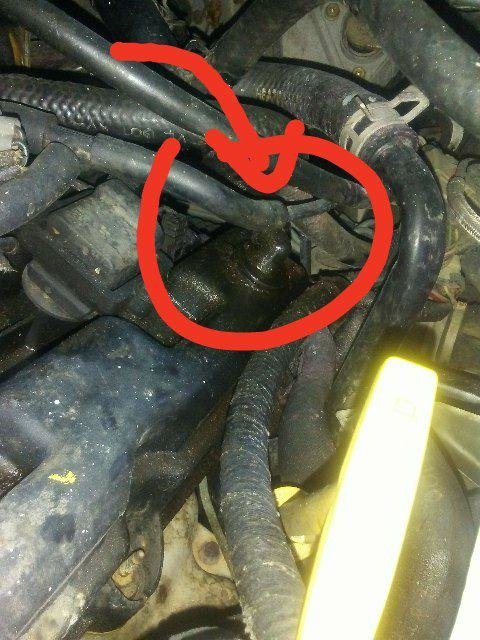Car runs great in city, stop and go, very smooth no noises, solid acceleration, etc. It even runs great on the freeway for a short time before the temperature gauge needle starts rocketing up the gauge. Sometimes it actually overheats while other times it just thinks about doing it, and the needle moves down, then up, then down, you get the idea. I always pull over to let it cool down, even if the warning light has not come on yet. If it is getting too close, I will shut it down.
There are no leaks. The only thing that leaks is about a teaspoon of oil when I park the car and have been told the oil pan gasket should be replaced. I need to solve this bizarre overheating issue first (as I do not know that the oil pan gasket leak would have any relationship to the overheating?).
Brand new shop installations (to try and solve the problem):
water pump, thermostat, temperature sensor, radiator, timing belt and adjust, coolant obviously (50/50). I have dumped a lot of cash down this hole already and have only owned the car for two weeks. Drove fine the first few days, then the overheating began and two mechanics and the work done so far have failed to resolve the problem.
Oddly enough, the car ran just fine for the first few days we have had it until I took it in for the California smog test. It passed, but after leaving the shop is when it first overheated and where all these problems began. Any relationship possibilities between being smog checked and the sudden onset of problems?
Mechanic now says it is likely a leak in the head gasket (not 'blown', as it runs so well, but something allowing air/high pressure into the system). There is no mixing of coolant and oil or oil and water, everything is clean. No white smoke out the pipe. Engine runs very smoothly, no hesitations, no roughness at all.
The one thing that strikes me as odd is that, in the morning when I check the coolant reservoir, it is brimming to the very top. It is supposed to be between the minimum and maximum lines well down into the reservoir, right? When filled, that is where it is filled to to the maximum line. So I am wondering why the reservoir is always way up to the top of the neck after cooling down (and maybe even while driving, and maybe that is the problem, if the coolant is somehow getting locked in the reservoir and not getting enough to the engine?). In any case, the reservoir is to the absolute overflow point in the morning (or after any solid cool down period).
When the engine runs hot, there is bubbling in the reservoir and it seems to be holding an awful lot of pressure. Mechanic said after twenty minutes you should be able to remove the cap, but there is high pressure in that reservoir well beyond that. Reservoir is full, bubbling, and spitting out the overflow 'blowhole' on top of the reservoir. Let it sit until fully cool, remove the cap, and there it is in all its glory coolant right up to the very top of the neck.
I have checked the cap and it appears to be okay. It is an aftermarket cap, 16 lbs, 'assembled in Mexico', but not sure what brand it is and the car is down at the shop, so I cannot check.
Cap or head gasket? They seem to be the only two things left. I think if there were any cracks in the head/block/cylinder that performance would not be anywhere as good as it is, and other more dire symptoms would be present. The car runs so well, that is why I am willing to invest a little bit to try and get it back on the highway without worry of overheating.
Thank you in advance for any help. This is a car my son and I picked out, private owner, for him to drive at college. I feel so guilty and like I let him down.
SPONSORED LINKS
Wednesday, July 13th, 2011 AT 3:46 PM




